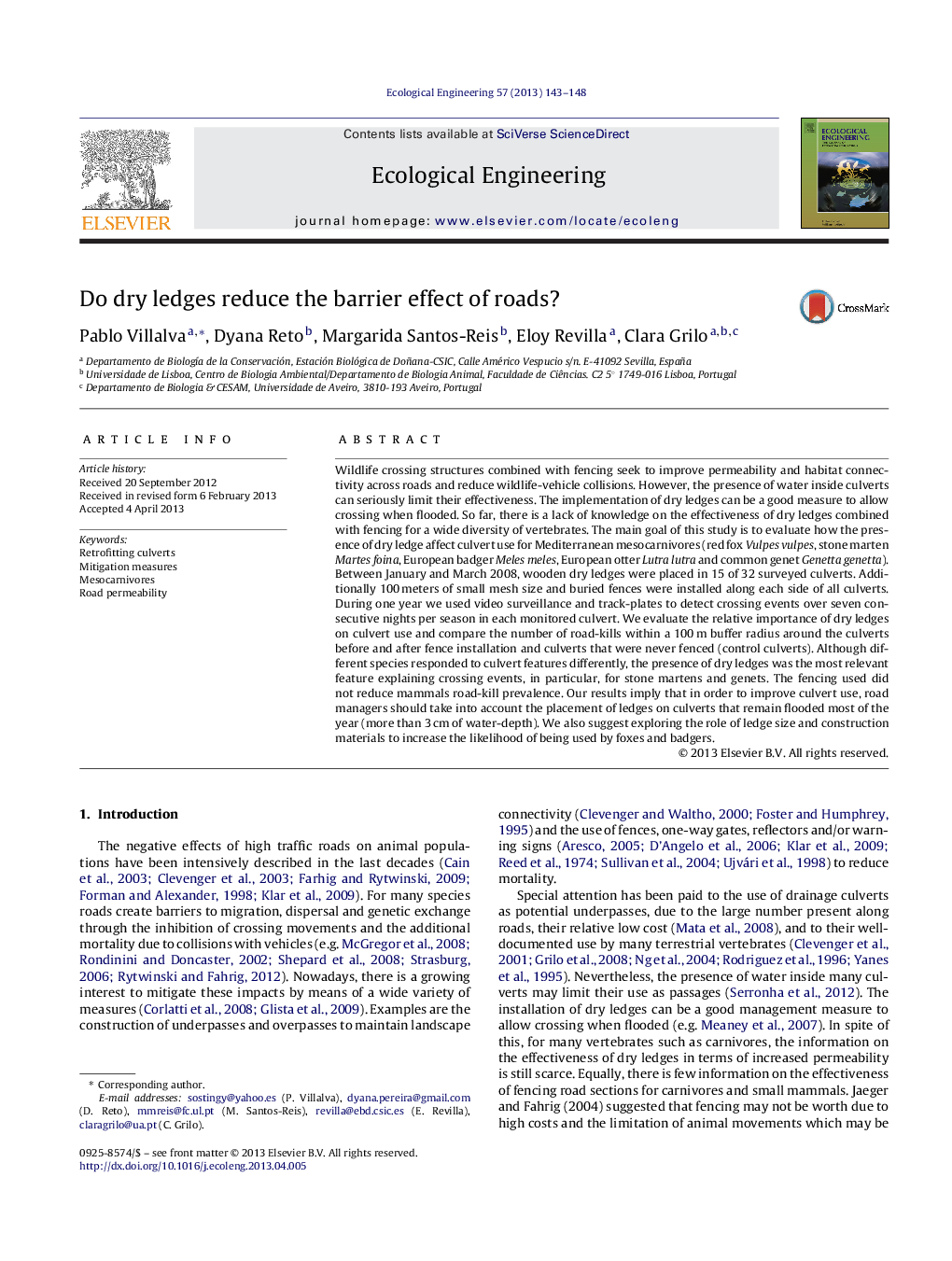| Article ID | Journal | Published Year | Pages | File Type |
|---|---|---|---|---|
| 6302599 | Ecological Engineering | 2013 | 6 Pages |
Abstract
Wildlife crossing structures combined with fencing seek to improve permeability and habitat connectivity across roads and reduce wildlife-vehicle collisions. However, the presence of water inside culverts can seriously limit their effectiveness. The implementation of dry ledges can be a good measure to allow crossing when flooded. So far, there is a lack of knowledge on the effectiveness of dry ledges combined with fencing for a wide diversity of vertebrates. The main goal of this study is to evaluate how the presence of dry ledge affect culvert use for Mediterranean mesocarnivores (red fox Vulpes vulpes, stone marten Martes foina, European badger Meles meles, European otter Lutra lutra and common genet Genetta genetta). Between January and March 2008, wooden dry ledges were placed in 15 of 32 surveyed culverts. Additionally 100Â meters of small mesh size and buried fences were installed along each side of all culverts. During one year we used video surveillance and track-plates to detect crossing events over seven consecutive nights per season in each monitored culvert. We evaluate the relative importance of dry ledges on culvert use and compare the number of road-kills within a 100Â m buffer radius around the culverts before and after fence installation and culverts that were never fenced (control culverts). Although different species responded to culvert features differently, the presence of dry ledges was the most relevant feature explaining crossing events, in particular, for stone martens and genets. The fencing used did not reduce mammals road-kill prevalence. Our results imply that in order to improve culvert use, road managers should take into account the placement of ledges on culverts that remain flooded most of the year (more than 3Â cm of water-depth). We also suggest exploring the role of ledge size and construction materials to increase the likelihood of being used by foxes and badgers.
Keywords
Related Topics
Life Sciences
Agricultural and Biological Sciences
Ecology, Evolution, Behavior and Systematics
Authors
Pablo Villalva, Dyana Reto, Margarida Santos-Reis, Eloy Revilla, Clara Grilo,
